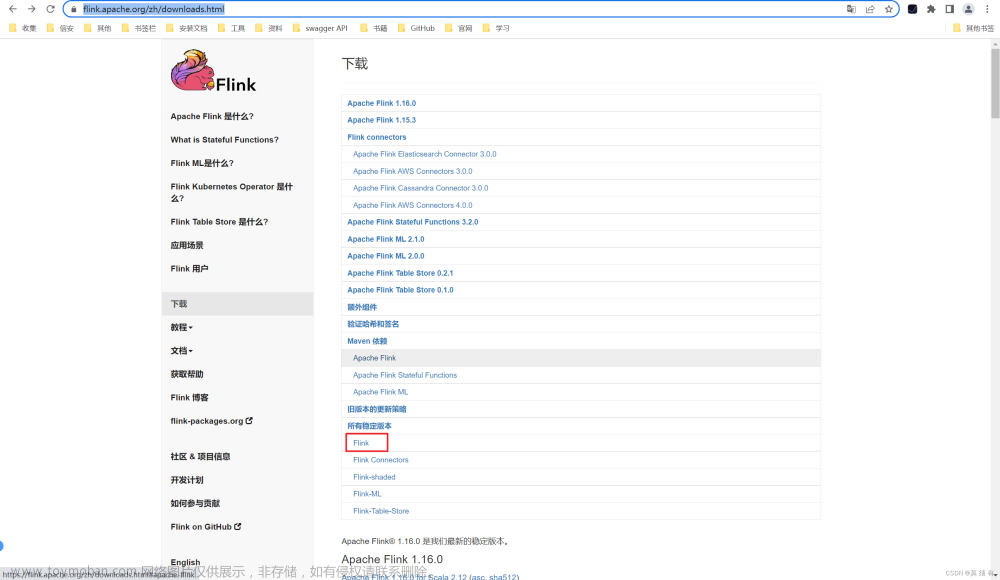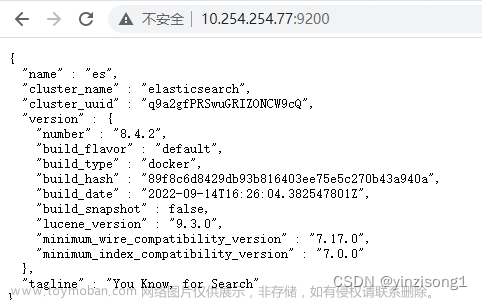因为项目中要使用KAFKA,自己搭建一个单机版,作测试服务器使用,已经过测试,可以使得,分享有需要的朋友。
一、 kafka环境搭建
下载kafka单机版,可以使用源码的方式和安装包的方式安装。使用安装包的方式进行安装,只需要进行解压运行即可。
源码下载地址:https://archive.apache.org/dist/kafka/2.5.0/kafka-2.5.0-src.tgz
安装包下载地址:https://archive.apache.org/dist/kafka/2.5.0/kafka_2.12-2.5.0.tgz
(1)、解压kafka_2.12-2.5.0.tgz,得到 "kafka_2.12-2.5.0 " 文件夹。
tar -zxvf kafka_2.12-2.5.0.tgz
(2)、kafka需要安装zookeeper使用,但kafka集成zookeeper,在单机搭建时可直接使用。使用需配置kafka_2.12-2.5.0/config 下的“zookeeper.properties”
cd kafka_2.12-2.5.0/config
注:经过部署发现 kafka必须配置zookeeper 否则无法启动 无论是单机还是集群,必须,必须,必须开启
# Licensed to the Apache Software Foundation (ASF) under one or more
# contributor license agreements. See the NOTICE file distributed with
# this work for additional information regarding copyright ownership.
# The ASF licenses this file to You under the Apache License, Version 2.0
# (the "License"); you may not use this file except in compliance with
# the License. You may obtain a copy of the License at
#
# http://www.apache.org/licenses/LICENSE-2.0
#
# Unless required by applicable law or agreed to in writing, software
# distributed under the License is distributed on an "AS IS" BASIS,
# WITHOUT WARRANTIES OR CONDITIONS OF ANY KIND, either express or implied.
# See the License for the specific language governing permissions and
# limitations under the License.
# the directory where the snapshot is stored.
dataDir=/tmp/zookeeper
# the port at which the clients will connect
clientPort=2181
# disable the per-ip limit on the number of connections since this is a non-production config
maxClientCnxns=0
# Disable the adminserver by default to avoid port conflicts.
# Set the port to something non-conflicting if choosing to enable this
admin.enableServer=false
# admin.serverPort=8080
(3)、配置"zookeeper.properties"。修改dataDir和clientPort。前者是快照存放地址(自己随意配置),后者是客户端连接zookeeper服务的端口。默认端口2181 最好默认不修改
vim kafka_2.12-2.5.0/config/zookeeper.properties
(4)、配置kafka_2.12-2.5.0/config下的“server.properties”,修改log.dirs和zookeeper.connect。前者是日志存放文件夹,后者是zookeeper连接地址(端口和clientPort保持一致)。
vim kafka_2.12-2.5.0/config/server.properties
# Licensed to the Apache Software Foundation (ASF) under one or more
# contributor license agreements. See the NOTICE file distributed with
# this work for additional information regarding copyright ownership.
# The ASF licenses this file to You under the Apache License, Version 2.0
# (the "License"); you may not use this file except in compliance with
# the License. You may obtain a copy of the License at
#
# http://www.apache.org/licenses/LICENSE-2.0
#
# Unless required by applicable law or agreed to in writing, software
# distributed under the License is distributed on an "AS IS" BASIS,
# WITHOUT WARRANTIES OR CONDITIONS OF ANY KIND, either express or implied.
# See the License for the specific language governing permissions and
# limitations under the License.
# see kafka.server.KafkaConfig for additional details and defaults
############################# Server Basics #############################
# The id of the broker. This must be set to a unique integer for each broker.
broker.id=0
############################# Socket Server Settings #############################
# The address the socket server listens on. It will get the value returned from
# java.net.InetAddress.getCanonicalHostName() if not configured.
# FORMAT:
# listeners = listener_name://host_name:port
# EXAMPLE:
# listeners = PLAINTEXT://your.host.name:9092
# 注:若需要外部访问 一定需要配置listeners 默认为本机IP 端口默认9092 如图:
listeners=PLAINTEXT://127.0.0.1:9092
# Hostname and port the broker will advertise to producers and consumers. If not set,
# it uses the value for "listeners" if configured. Otherwise, it will use the value
# returned from java.net.InetAddress.getCanonicalHostName().
#advertised.listeners=PLAINTEXT://your.host.name:9092
# Maps listener names to security protocols, the default is for them to be the same. See the config documentation for more details
#listener.security.protocol.map=PLAINTEXT:PLAINTEXT,SSL:SSL,SASL_PLAINTEXT:SASL_PLAINTEXT,SASL_SSL:SASL_SSL
# The number of threads that the server uses for receiving requests from the network and sending responses to the network
num.network.threads=3
# The number of threads that the server uses for processing requests, which may include disk I/O
num.io.threads=8
# The send buffer (SO_SNDBUF) used by the socket server
socket.send.buffer.bytes=102400
# The receive buffer (SO_RCVBUF) used by the socket server
socket.receive.buffer.bytes=102400
# The maximum size of a request that the socket server will accept (protection against OOM)
socket.request.max.bytes=104857600
############################# Log Basics #############################
# A comma separated list of directories under which to store log files
log.dirs=/tmp/kafka-logs
# The default number of log partitions per topic. More partitions allow greater
# parallelism for consumption, but this will also result in more files across
# the brokers.
num.partitions=1
# The number of threads per data directory to be used for log recovery at startup and flushing at shutdown.
# This value is recommended to be increased for installations with data dirs located in RAID array.
num.recovery.threads.per.data.dir=1
############################# Internal Topic Settings #############################
# The replication factor for the group metadata internal topics "__consumer_offsets" and "__transaction_state"
# For anything other than development testing, a value greater than 1 is recommended to ensure availability such as 3.
offsets.topic.replication.factor=1
transaction.state.log.replication.factor=1
transaction.state.log.min.isr=1
############################# Log Flush Policy #############################
# Messages are immediately written to the filesystem but by default we only fsync() to sync
# the OS cache lazily. The following configurations control the flush of data to disk.
# There are a few important trade-offs here:
# 1. Durability: Unflushed data may be lost if you are not using replication.
# 2. Latency: Very large flush intervals may lead to latency spikes when the flush does occur as there will be a lot of data to flush.
# 3. Throughput: The flush is generally the most expensive operation, and a small flush interval may lead to excessive seeks.
# The settings below allow one to configure the flush policy to flush data after a period of time or
# every N messages (or both). This can be done globally and overridden on a per-topic basis.
# The number of messages to accept before forcing a flush of data to disk
#log.flush.interval.messages=10000
# The maximum amount of time a message can sit in a log before we force a flush
#log.flush.interval.ms=1000
############################# Log Retention Policy #############################
# The following configurations control the disposal of log segments. The policy can
# be set to delete segments after a period of time, or after a given size has accumulated.
# A segment will be deleted whenever *either* of these criteria are met. Deletion always happens
# from the end of the log.
# The minimum age of a log file to be eligible for deletion due to age
log.retention.hours=168
# A size-based retention policy for logs. Segments are pruned from the log unless the remaining
# segments drop below log.retention.bytes. Functions independently of log.retention.hours.
#log.retention.bytes=1073741824
# The maximum size of a log segment file. When this size is reached a new log segment will be created.
log.segment.bytes=1073741824
# The interval at which log segments are checked to see if they can be deleted according
# to the retention policies
log.retention.check.interval.ms=300000
############################# Zookeeper #############################
# Zookeeper connection string (see zookeeper docs for details).
# This is a comma separated host:port pairs, each corresponding to a zk
# server. e.g. "127.0.0.1:3000,127.0.0.1:3001,127.0.0.1:3002".
# You can also append an optional chroot string to the urls to specify the
# root directory for all kafka znodes.
zookeeper.connect=localhost:2181
# Timeout in ms for connecting to zookeeper
zookeeper.connection.timeout.ms=18000
############################# Group Coordinator Settings #############################
# The following configuration specifies the time, in milliseconds, that the GroupCoordinator will delay the initial consumer rebalance.
# The rebalance will be further delayed by the value of group.initial.rebalance.delay.ms as new members join the group, up to a maximum of max.poll.interval.ms.
# The default value for this is 3 seconds.
# We override this to 0 here as it makes for a better out-of-the-box experience for development and testing.
# However, in production environments the default value of 3 seconds is more suitable as this will help to avoid unnecessary, and potentially expensive, rebalances during application startup.
group.initial.rebalance.delay.ms=0
注:这里的web 为服务器的hostname 能不能写ip呢?大家可以试试,我这里写的是我的hostname
注:若需要外部访问 一定需要配置listeners 默认为本机IP 端口默认9092 如图:
到此,kafka的单机环境就搭建成功了。
二 kafka的相关命令(kafka_2.12-2.5.0的根目录下执行)
(1)开启kafka自带zookeeper
前台运行(显示Kafka内部打印或异常信息):./bin/zookeeper-server-start.sh ./config/zookeeper.properties
./bin/zookeeper-server-start.sh ./config/zookeeper.properties
后台运行:./bin/zookeeper-server-start.sh -daemon ./config/zookeeper.properties
./bin/zookeeper-server-start.sh -daemon ./config/zookeeper.properties
(2) 开启kafka(如果内存不够,可以增加虚拟内存来实现或物理内存)
前台运行(显示Kafka内部打印或异常信息):./bin/kafka-server-start.sh config/server.properties
./bin/kafka-server-start.sh config/server.properties
后台运行:./bin/kafka-server-start.sh -daemon ./config/server.properties
./bin/kafka-server-start.sh -daemon ./config/server.properties
使用jps命令查看是否正常了
jps
10978 QuorumPeerMain
31613 ConsoleConsumer
31150 Kafka
41839 Jps
三 测试验证kafka生产和消费功能 (3)创建kafka主题:
topic为test
./bin/kafka-topics.sh --create --zookeeper 127.0.0.1:2181 --replication-factor 1 --partitions 1 --topic test
#也可以使用下面命令 与上面命令等效
./bin/kafka-topics.sh --create --zookeeper web:2181 --replication-factor 1 --partitions 1 --topic test
其中zookeeper 可以使用hostname 也可以使用IP,若使用hostname,请注意hosts 即/etc/hosts 与hostname最好保持一致!
./bin/kafka-topics.sh --create --zookeeper 127.0.0.1:2181 --replication-factor 1 --partitions 1 --topic test
(4)显示kafka所有主题:
./bin/kafka-topics.sh --list --zookeeper 192.168.118.128:2181
#也可以使用下面命令 与上面命令等效
./bin/kafka-topics.sh --list --zookeeper web:2181
./bin/kafka-topics.sh --list --zookeeper 127.0.0.1:2181
./bin/kafka-topics.sh --list --zookeeper 192.168.118.128:2181
__consumer_offsets
test
test1
test2
(5)查看某个主题的详细信息:
./bin/kafka-topics.sh --zookeeper 192.168.118.128:2181 --describe --topic test2
Topic: test2 PartitionCount: 2 ReplicationFactor: 1 Configs:
Topic: test2 Partition: 0 Leader: 0 Replicas: 0 Isr: 0
Topic: test2 Partition: 1 Leader: 0 Replicas: 0 Isr: 0
(6)创建kafka生产者:
./bin/kafka-console-producer.sh --broker-list 192.168.118.128:9092 --topic test2
(7)创建kafka消费者
./bin/kafka-console-consumer.sh --bootstrap-server 192.168.118.128:9092 --topic test2 --from-beginning
--from-beginning 是从头开始消费
如下图所示:
解释:
--zookeeper:后面接的是你配置的zookeeper地址
--broker-list:默认端口为9092.可自行更改文章来源:https://www.toymoban.com/news/detail-610133.html
————————————————
版权声明:本文为CSDN博主「树下水月」的原创文章,遵循CC 4.0 BY-SA版权协议,转载请附上原文出处链接及本声明。
原文链接:https://blog.csdn.net/u013416034/article/details/123875299文章来源地址https://www.toymoban.com/news/detail-610133.html
到了这里,关于Kafka单机版部署说细教程的文章就介绍完了。如果您还想了解更多内容,请在右上角搜索TOY模板网以前的文章或继续浏览下面的相关文章,希望大家以后多多支持TOY模板网!











